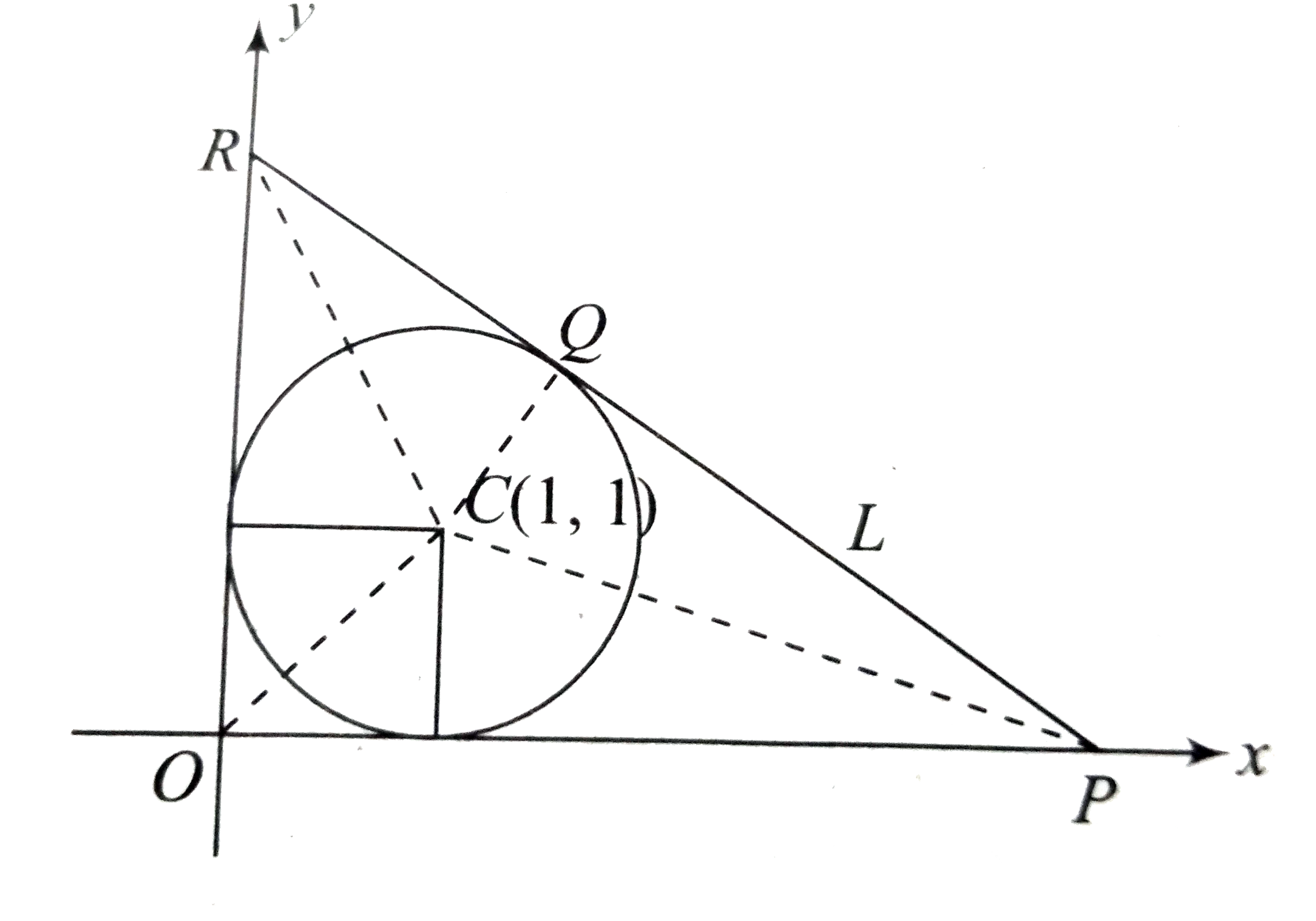Suppose A is a complex number and n∈N, such that An=(A+1)n=1, then the least value of n is 3 b. 6 c. 9 d. 12
3
6
9
12
The correct Answer is:B
To solve the problem, we need to find the least value of n such that An=(A+1)n=1 for a complex number A.
1. Understanding the Conditions:
We have An=1 and (A+1)n=1. This implies that both A and A+1 are n-th roots of unity.
2. Expressing A:
Let A=x+iy, where x and y are real numbers. The condition An=1 implies that the modulus of A is 1:
|A|=1⟹x2+y2=1(1)
3. Finding A+1:
Now, we compute the modulus of A+1:
A+1=(x+1)+iy
The modulus is given by:
|A+1|=√(x+1)2+y2=1
Squaring both sides, we get:
(x+1)2+y2=1(2)
4. Expanding Equation (2):
Expanding equation (2):
(x2+2x+1+y2)=1
Using equation (1) x2+y2=1:
1+2x+1=1⟹2x+2=1⟹2x=−1⟹x=−12
5. Finding y:
Substitute x=−12 back into equation (1):
(−12)2+y2=1⟹14+y2=1⟹y2=1−14=34
Thus, y=±√32.
6. Identifying A:
Therefore, the possible values for A are:
A=−12+i√32andA=−12−i√32
These correspond to the cube roots of unity ω and ω2, where ω=e2πi/3.
7. Finding n:
Since A=ω or A=ω2, we have:
An=1⟹ωn=1and(A+1)n=(−ω2)n=1
This means n must be a multiple of 3, and since A+1=−ω2, n must also be even.
8. Finding the Least Value of n:
The least common multiple of the conditions (multiple of 3 and even) gives us the smallest n as 6.
Conclusion:
Thus, the least value of n is 6.
We have An=1 and (A+1)n=1. This implies that both A and A+1 are n-th roots of unity.
Let A=x+iy, where x and y are real numbers. The condition An=1 implies that the modulus of A is 1:
|A|=1⟹x2+y2=1(1)
Now, we compute the modulus of A+1:
A+1=(x+1)+iy
The modulus is given by:
|A+1|=√(x+1)2+y2=1
Squaring both sides, we get:
(x+1)2+y2=1(2)
Expanding equation (2):
(x2+2x+1+y2)=1
Using equation (1) x2+y2=1:
1+2x+1=1⟹2x+2=1⟹2x=−1⟹x=−12
Substitute x=−12 back into equation (1):
(−12)2+y2=1⟹14+y2=1⟹y2=1−14=34
Thus, y=±√32.
Therefore, the possible values for A are:
A=−12+i√32andA=−12−i√32
These correspond to the cube roots of unity ω and ω2, where ω=e2πi/3.
Since A=ω or A=ω2, we have:
An=1⟹ωn=1and(A+1)n=(−ω2)n=1
This means n must be a multiple of 3, and since A+1=−ω2, n must also be even.
The least common multiple of the conditions (multiple of 3 and even) gives us the smallest n as 6.
Thus, the least value of n is 6.
Topper's Solved these Questions
- COMPLEX NUMBERSBook:CENGAGE ENGLISHChapter:COMPLEX NUMBERSExercise:MULTIPLE CORRECT ANSWERS TYPE
Explore 49 Videos
- COMPLEX NUMBERSBook:CENGAGE ENGLISHChapter:COMPLEX NUMBERSExercise:LINKED COMPREHENSION TYPE
Explore 36 Videos
- COMPLEX NUMBERSBook:CENGAGE ENGLISHChapter:COMPLEX NUMBERSExercise:EXERCISE3.11
Explore 6 Videos
- CIRCLESBook:CENGAGE ENGLISHChapter:CIRCLESExercise:Comprehension Type
Explore 8 Videos
- CONIC SECTIONSBook:CENGAGE ENGLISHChapter:CONIC SECTIONSExercise:All Questions
Explore 101 Videos
Similar Questions
If z=ω,ω2whereω is a non-real complex cube root of unity, are two vertices of an equilateral triangle in the Argand plane, then the third vertex may be represented by z=1 b. z=0 c. z=−2 d. z=−1
View SolutionConsider the complex number z=1−isinθ1+icosθ.
The value of θ for which z is purely real are
View SolutionIf α is complex fifth root of unity and (1+α+α2+α3)2005=p+qα+rα2+sα3 (where p,q,r,s are real), then find the value of p+q+r+s.
View Solution
In the diagram as shown, a circle is drawn with centre C(1,1) and radius 1 and a line L. The line L is tangent to the circle at Q. Further L meets the y-axis at R and the x-axis at P in such a way that the angle OPQ equals θ where 0<θ<π2.
Area of triangle OPR when θ=π/4 is
View SolutionGiven that A(1,1) and B(2,−3) are two points and D is a point on AB produced such that AD=3AB. Find the coordinates of D.
View SolutionThe sum of the series 23+89+2627+8081+ to n terms is n−12(3−n−1) (b) n−12(1−3−n) (c) n+12(3n−1) (d) n−12(3n−1)
View SolutionThe number of possible outcomes in a throw of n ordinary dice in which at least one of the die shows and odd number is a. 6n−1 b. 3n−1 c. 6n−3n d. none of these
View SolutionThe least positive integer n for which (n+1)^((1)/(3))-(n)^((1)/(3))<(1)/(12) is (A) 6(B)7(C)8 (D) 9
View SolutionThe value of (n!)^(n) if n+(n-1)+(n-2)=n(n-1)(n-2) where n^(3)>9, a positive number is
View SolutionIf A=[2−41−1] the value of An is (A) [3n(−4)n1(−1)n] (B) [3n−4nnn] (C) [2+n5−nn−n] (D) none of these
View SolutionIf in the expansion f (1+x)^m(1-x)^n, the coefficient of x and x^2 are 3 and -6 respectively then (A) m=9 (B) n=12 (C) m=12 (D) n=9
View SolutionThe value of (n!)n if n+(n−1)+(n−2)=n(n−1)(n−2), where n3>9, a positive number:
View SolutionA value of n such that (√32+i2)n=1 is
(A) 12 (B) 3 (C) 2 (D) 1
View SolutionThe number of possible outcomes in a throw of n ordinary dice in which at least one of the die shows and odd number is a. 6n−1 b. 3n−1 c. 6n−3n d. none of these
View SolutionIn (213+1313)n if the ratio of 7th term from the beginning to the 7th term from the end is 16, then the value of nis (a) 6 (b) 9 (c) 12 (d) 15
View SolutionIf the value of nC0+2⋅nC1+3⋅nC2+...+(n+1)⋅nCn=576, then n is (a) 7 (b) 5 (c) 6 (d) 9
View Solution
